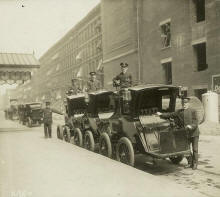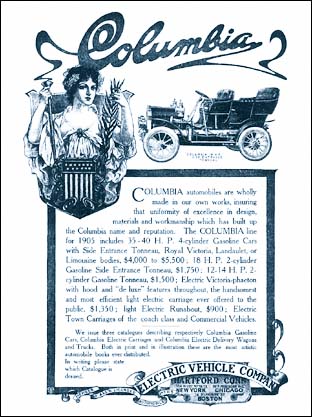Electric Vehicle Company
|
The Electric Vehicle Company (previously the Electric Carriage and Wagon Company) was founded by Henry G. Morris and Pedro G. Salom in 1899 by the merger of Pope Manufacturing Company and two smaller firms. The company pioneered the use of pressed steel for wheels, and its cars featured front-wheel drive and brakes, and rear-wheel steering. In 1899, ninety percent of the cabs in New York City were electric and Jacob German was the first man to be arrested for speeding. He was a New York taxi driver who was arrested after being caught doing 12 mph on Lexington Avenue. By 1900, the Electric Vehicle Company had put hundreds of its electric Hansom cabs, modeled after the design of its horse-drawn predecessors, on the streets of the metropolis. The Hansoms eliminated the need for a differential by providing a separate motor and axle for each rear wheel. Beginning in 1901, the Electric
Vehicle Company produced both gasoline-powered and electric automobiles.
In 1907 Electric Vehicle went into the receivership. |


